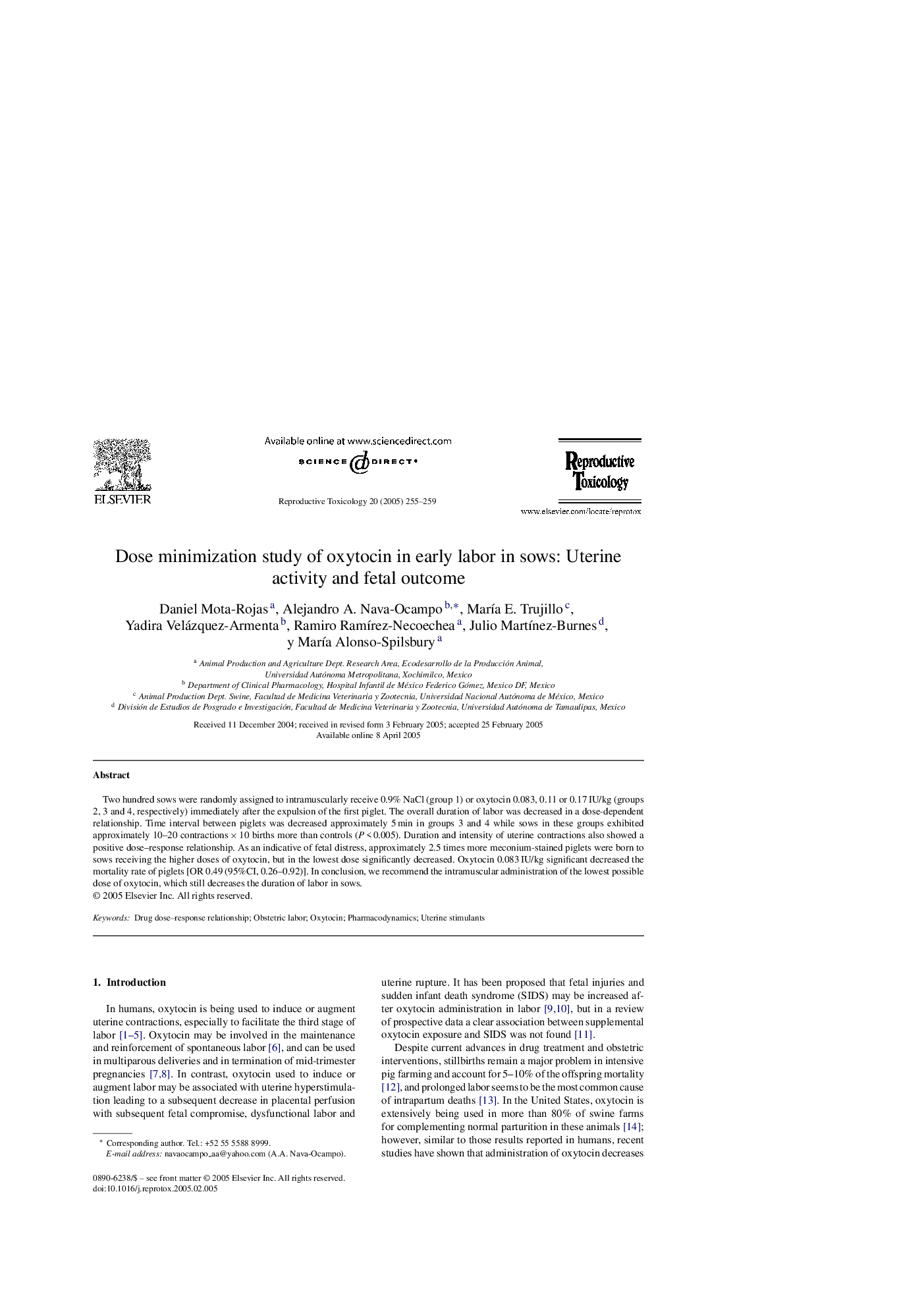| Article ID | Journal | Published Year | Pages | File Type |
|---|---|---|---|---|
| 9034149 | Reproductive Toxicology | 2005 | 5 Pages |
Abstract
Two hundred sows were randomly assigned to intramuscularly receive 0.9% NaCl (group 1) or oxytocin 0.083, 0.11 or 0.17 IU/kg (groups 2, 3 and 4, respectively) immediately after the expulsion of the first piglet. The overall duration of labor was decreased in a dose-dependent relationship. Time interval between piglets was decreased approximately 5 min in groups 3 and 4 while sows in these groups exhibited approximately 10-20 contractions Ã 10 births more than controls (P < 0.005). Duration and intensity of uterine contractions also showed a positive dose-response relationship. As an indicative of fetal distress, approximately 2.5 times more meconium-stained piglets were born to sows receiving the higher doses of oxytocin, but in the lowest dose significantly decreased. Oxytocin 0.083 IU/kg significant decreased the mortality rate of piglets [OR 0.49 (95%CI, 0.26-0.92)]. In conclusion, we recommend the intramuscular administration of the lowest possible dose of oxytocin, which still decreases the duration of labor in sows.
Related Topics
Life Sciences
Environmental Science
Health, Toxicology and Mutagenesis
Authors
Daniel Mota-Rojas, Alejandro A. Nava-Ocampo, MarÃa E. Trujillo, Yadira Velázquez-Armenta, Ramiro RamÃrez-Necoechea, Julio MartÃnez-Burnes, y MarÃa Alonso-Spilsbury,
